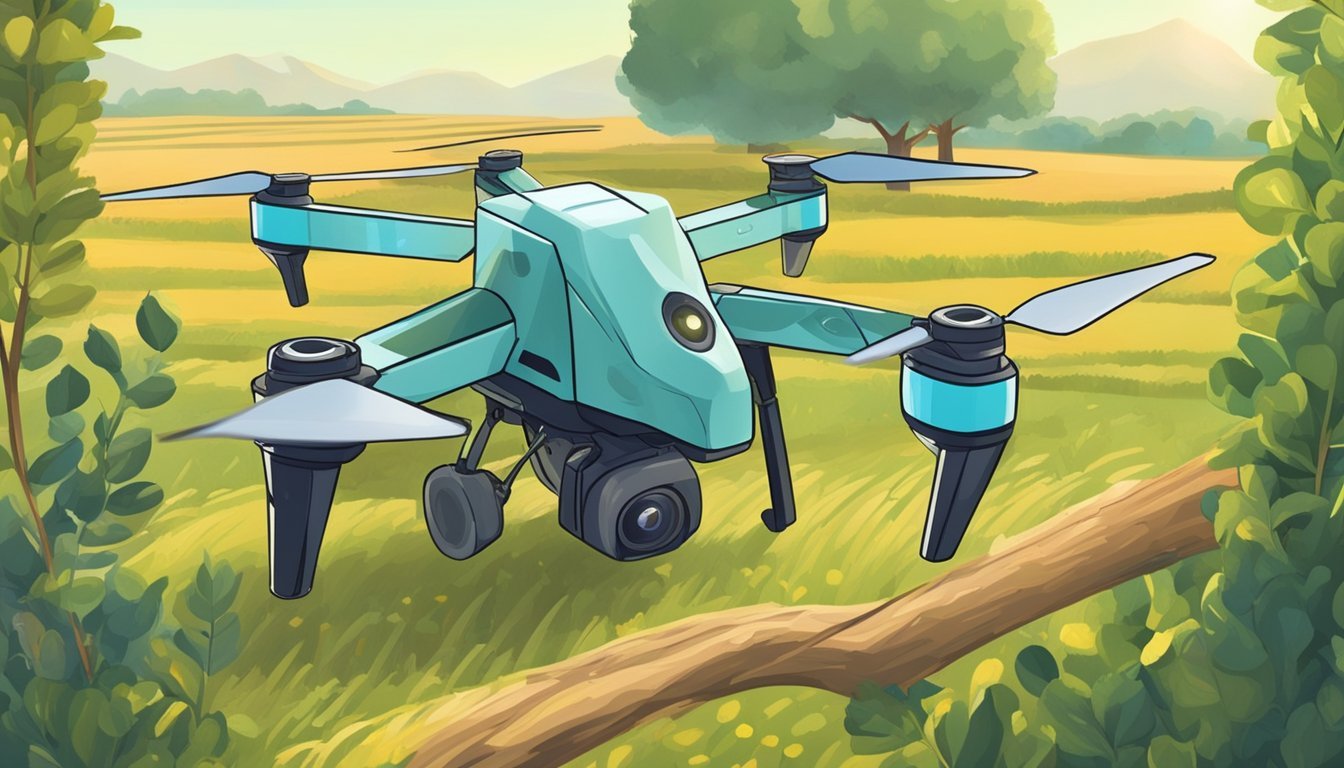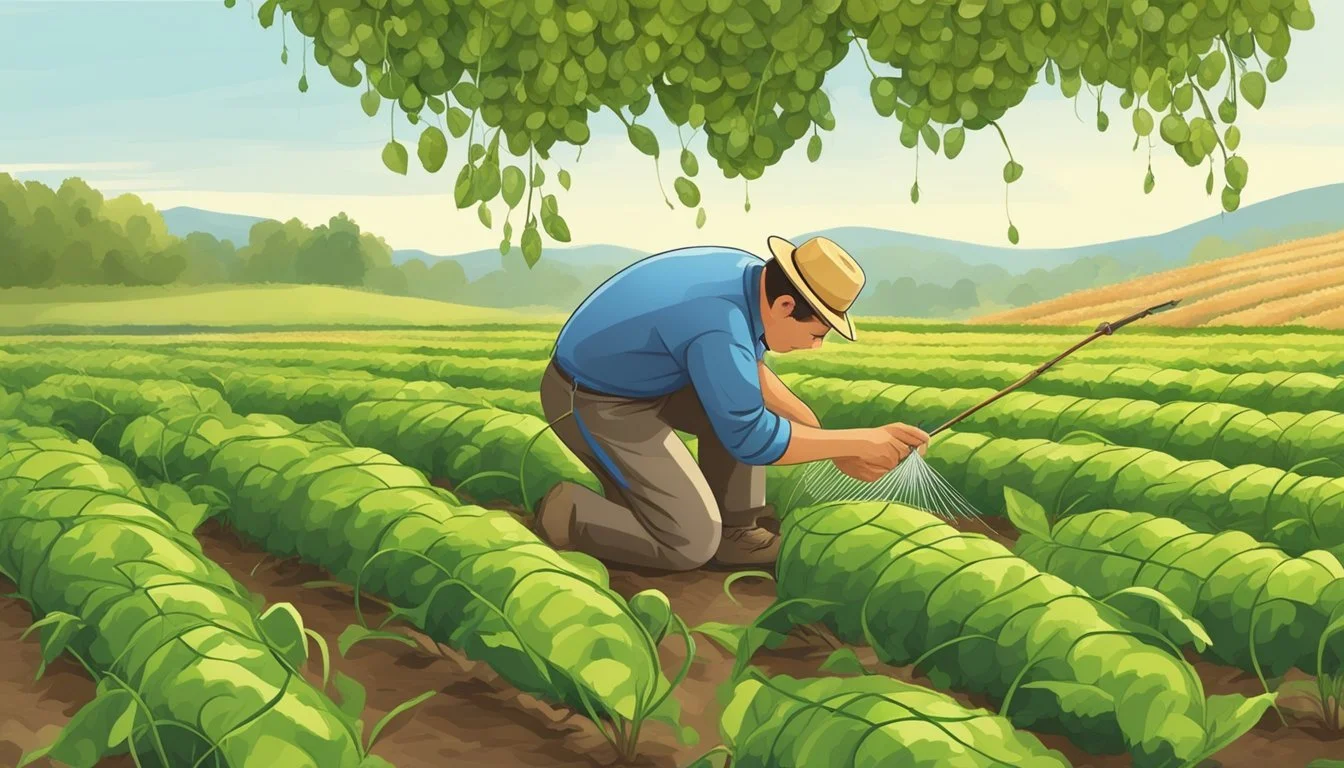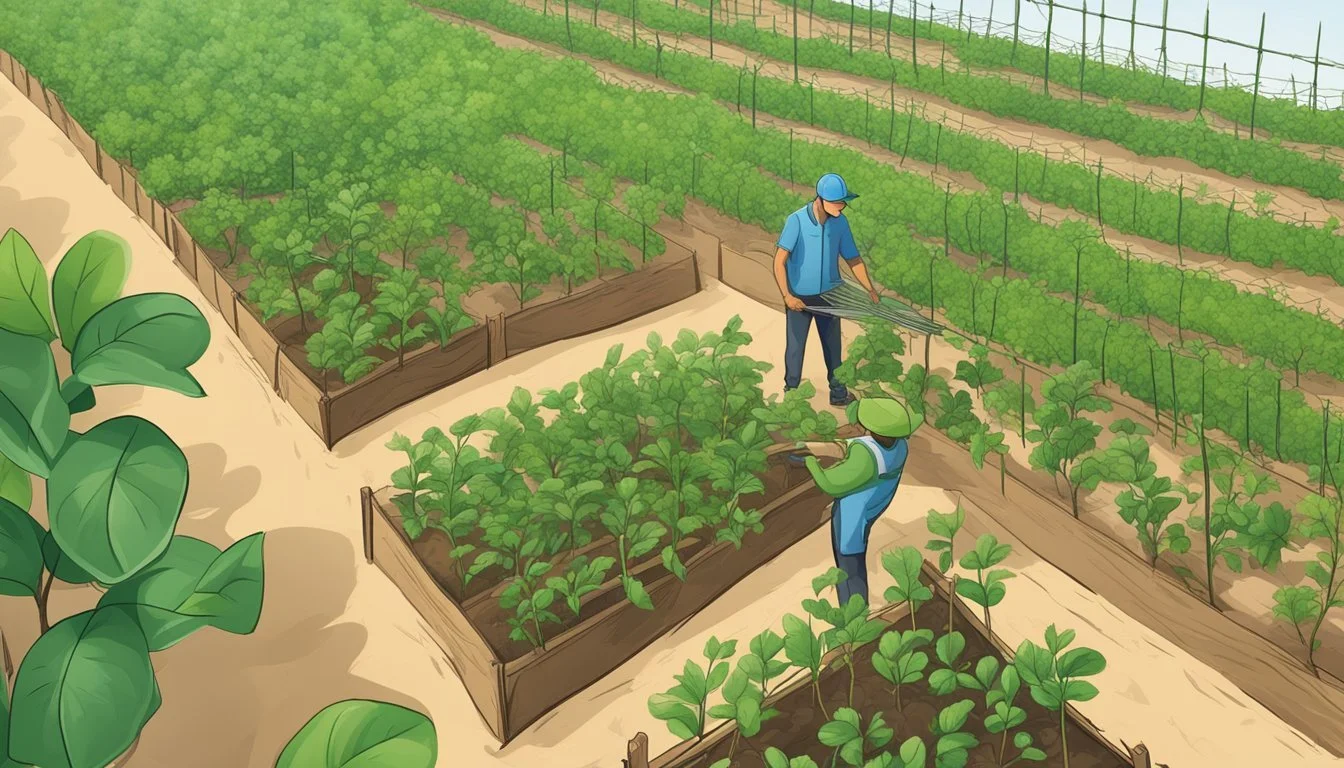Protecting Crops from Twig Girdlers
Effective Management Strategies
Twig girdlers are significant pests that target a variety of trees, posing a threat to both commercial orchards and residential landscapes. These beetles are notorious for their unique method of damaging trees; they sever twigs and branches as part of their reproductive cycle. This behavior not only disrupts the aesthetic appeal of trees but can also lead to substantial crop losses and weakened tree structures. Understanding the life cycle and behaviors of twig girdlers is essential in devising effective strategies to mitigate their impact.
Damage caused by twig girdlers is easily identifiable by the neatly clipped branches that often litter the ground around affected trees. The adult beetles lay their eggs in the small twigs and branches of a host tree, and then girdle, or chew, a groove around the circumference, causing the twig to break off and fall to the ground. This is where their larvae develop, feeding on the wood within. As a result, the larvae remain protected and are able to continue their life cycle. Effective control of twig girdlers relies on a combination of cultural practices and timely interventions to break this cycle and protect trees from damage.
It's important for property owners and agricultural producers to be vigilant in monitoring for signs of twig girdler activity, particularly from late summer to fall when adult beetles are most active. Correct identification of the pest and the extent of the damage are critical first steps in managing the impact on trees. Combating Twig Girdler Infestation: A Comprehensive Guide to Damage Management provides insights into the beetle's feeding habits, which is valuable for determining control strategies. By addressing twig girdler infestations promptly, tree health can be preserved, and further damage can be prevented.
Understanding Twig Girdlers
Twig girdlers are a distinct group of long-horned beetles that are known for their unique approach to reproduction, which involves severing twigs from a host tree. This behavior has significant implications for the health and yield of various hardwood trees.
Biology and Life Cycle
Twig girdlers, classified under the family Cerambycidae, go through a complete metamorphosis in their life cycle including the stages of egg, larva, pupa, and adult. Adults are generally grayish-brown in color and can be identified by their long antennae that often exceed their body length. The females lay their eggs in twigs that they have girdled.
The larvae hatch from the eggs and burrow into the wood, feeding on the internal tissues of the twig as they grow. This larval period may vary in length, but it typically lasts until they are ready to pupate within the twig itself. As the process is completed, new adults emerge to repeat the cycle.
Signs and Symptoms of Infestation
Infestation by twig girdlers is often recognized by several telltale signs:
Girdling: Trees exhibit a distinct damage pattern, where twigs and branches are neatly girdled, weakening them until they break off.
Fallen Twigs: Seeing twigs that have been neatly severed around the circumference and are on the ground is a common sign of twig girdler activity.
Dying Tips: The tips of branches may begin to die back after being damaged by the adult beetles during the egg-laying process.
Common Host Trees
The host range for twig girdlers mainly includes hardwood trees, with some of their favorite hosts being:
Oak
Hickory
Pecan
Persimmon
Elm
Hackberry
Dogwood
Honeylocust
Poplar
Linden
They are also known to infest fruit trees and redbud, highlighting the importance of understanding which species are most at risk in order to protect them effectively from damage.
Preventive Measures and Monitoring
To protect crops effectively from twig girdlers, it is crucial to employ a multifaceted approach that includes cultural control techniques, physical removal of infested twigs, and maintaining tree health to deter infestation. Monitoring for signs of twig girdling is essential for early detection and control.
Cultural Control Techniques
Monitoring is the first line of defense in managing twig girdler infestations. Regular inspection of trees, especially during fall when female beetles are actively laying eggs, can help in identifying the early signs of twig girdling. Education about the twig pruner's life cycle and habits is vital for effective monitoring. Clean-up practices, such as collecting fallen branches from the ground, play a significant role in breaking the pest's life cycle. Pruning away girdled twigs before the larvae have a chance to grow and removing potential breeding grounds are key strategies.
Inspect trees regularly for signs of twig girdling
Collect and destroy fallen and girdled branches
Prune away infested twigs
Physical Removal of Infested Twigs
The physical removal of infested twigs is a direct control method. After the initial monitoring phase, it is important to pick up and destroy fallen branches that have been girdled by the pest. This method prevents the larvae from completing their cycle and emerging as adults. Twig pruning should be done carefully to avoid further stress to the trees.
Remove infested twigs and branches promptly
Destroy the removed material to eliminate the larvae
Importance of Tree Health
Healthy trees are less susceptible to serious damage from twig girdlers. Maintaining tree health through proper nutrition and watering can help the tree withstand and recover from any damage caused. Fertilization, watering, and protecting trees from other stressors contribute to the overall resilience against twig girdling.
Promote tree health with proper nutrition and watering
Protect trees from additional stressors
Active Management Strategies
Active management of twig girdler populations focuses on reducing the damage these pests cause to crops. Incorporating mechanical, chemical, and integrated pest management approaches is crucial for effective control.
Mechanical Control Methods
Mechanical control methods are often the first line of defense against twig girdlers. These methods include:
Regular Monitoring: Inspecting crops for signs of twig girdler activity helps in early detection.
Sanitation: Removing and destroying infested twigs and branches from the ground reduces the number of larvae that can mature into damaging adults.
Chemical Control Options
Chemical control is recommended when there is a significant infestation of twig girdlers. Insecticides, such as carbaryl, can be used judiciously:
Carbaryl Application: Apply carbaryl when twig girdlers are most active, ensuring thorough coverage for effective control.
Dosage and Timing: Follow the label instructions for dosage, and choose the optimal time to apply, such as early evening when adults are active but bees are less active.
Integrated Pest Management
Integrated Pest Management (IPM) combines cultural control, biological control, mechanical control, and selective use of chemicals. Elements of IPM for twig girdler control include:
Cultural Control: Modify cultural practices to make the environment less conducive to twig girdlers.
Education and Entomology: Understand the life cycle of twig girdlers and educate those involved in crop management about best practices for control.
Post-Infestation Cleanup
After a twig girdler infestation has been identified, the following cleanup steps are critical in reducing further pest activity and assisting in tree recovery. Proper management of debris and sanitation, as well as careful rehabilitation of affected trees, helps to mitigate the damage and encourage a return to health for the impacted plants.
Debris Disposal and Sanitation
To destroy twig girdler larvae and reduce future populations, prompt clean-up actions are essential in the post-infestation phase. Burning the collected debris can effectively eliminate the pests. Alternatively, burying the infested twigs in a moist area deprives the larvae of the conditions needed for survival. In areas where burning or burying is not feasible, placing the twigs in a hot, dry environment can also be effective.
Burning: Destroys larvae thoroughly, but check local regulations first.
Burying: Should be in a moist area to disrupt larvae development.
Hot/Dry Exposure: Another method when burning/burying isn't an option.
Rehabilitating Affected Trees
After addressing the debris, focus shifts to the rehabilitation of the trees that suffered bark and twig damage. Pruning is crucial; not only does it remove the damaged sections, the process also encourages new growth and helps maintain the structural integrity of the fruit-bearing branches. A tree's natural defense mechanism is often enough to heal from the wounds, but it should be monitored for signs of ongoing stress or secondary pest invasion.
Pruning: Remove damaged limbs to foster healthy regrowth.
Monitoring: Regular checks for health and pests are indispensable.
Maintaining healthy trees through vigilance and proper care ensures that even after an encounter with twig girdlers, a tree can recover and thrive in subsequent growing seasons.
Long-Term Management and Education
Effective long-term management of twig girdlers involves a combination of community efforts and utilizing educational resources. Homeowners and land managers can benefit from a strategic approach that includes public education, extension services, and research initiatives in entomology to control the adult female twig girdler and mitigate damage.
Community Engagement and Public Education
Public education initiatives are crucial in sensitizing the community about the twig girdler problem. Homeowners need to identify twig girdlers and understand their life cycle to effectively manage their presence. Educational ebooks and info materials provided by research institutions can inform the public about best practices in control methods, including the removal of fallen branches to interrupt the life cycle of these pests. Through workshops and seminars, individuals learn the importance of regular inspection and maintenance in reducing the prevalence of twig girdlers in their areas.
Research and Extension Services
Research conducted by entomology departments at universities can identify new management strategies for twig girdler control. The extension services offered by these educational institutions translate the latest scientific knowledge into practical information accessible to the public. These services often include providing educational materials, conducting on-site visits, and hosting informational webinars. The findings can help refine existing control measures and also lead to the discovery of environmentally friendly and sustainable management practices for long-term prevention.
Frequently Asked Questions
This section addresses common questions about combating twig girdler infestations, signs of infestation, prevention methods, seasonal susceptibility, population management, and treatment options for affected trees.
What methods are effective in controlling twig girdler infestations?
Controlling twig girdler infestations typically involves physical removal of infested twigs and branches. Chemical control is rarely justified, as these pests do not generally cause significant damage to mature trees. However, for young or landscaped trees, monitoring and removing damaged wood is crucial.
What signs indicate a tree has been infested by a twig girdler or twig pruner?
Signs of infestation include cleanly cut or girdled twigs and branches, often found on the ground beneath trees. Female twig girdlers lay their eggs in small twigs, then chew the twigs causing them to drop to the ground in late summer to early fall.
How can one deter twig girdlers from attacking trees?
Preventive measures against twig girdlers include maintaining tree health through proper fertilization and watering, which can reduce the likelihood of attack. Removal of dead or infested wood can also minimize the potential for infestation, as this eliminates breeding sites.
Are there specific times of the year when trees are more susceptible to twig girdler damage?
Trees are particularly susceptible to twig girdler damage during late summer to early fall. This is the period when adult beetles lay eggs and the resulting larval activity causes twig girdling and subsequent dropping of twigs.
What are the best practices for managing twig girdler beetle populations?
Best practices for managing twig girdler beetle populations include regular inspection of trees for signs of damage and prompt removal of affected limbs. Since larvae overwinter in fallen twigs, gathering and destroying these can effectively reduce beetle numbers.
What treatment options are available to address twig girdler damage in oak trees?
For oak trees suffering from twig girdler damage, manual removal and destruction of damaged twigs are generally recommended. In cases where infestations are severe, professional arborists may suggest targeted insecticide treatments, although such measures are typically reserved for young or vulnerable trees.






